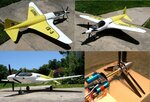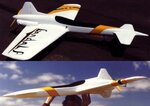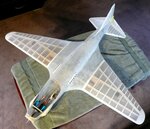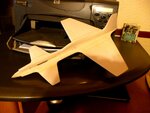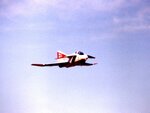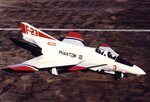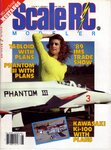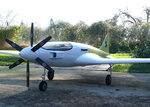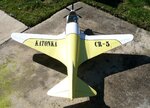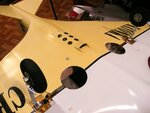Katonka
New member
I am doing a thread here on the use of "Real Flight" as one of your tools if you are a R/C modeler who likes to have the fun of designing your own aircraft. This is a very interesting and rewarding part of modeling if you are a RC modeler.
Times have changed through the years. Did you know that just 10 years ago, there was no such thing as ARFs? If you wanted to fly RC, you bought a kit or had someone else build a kit for you. There are over 150 members in our club. There are only about 10 RC modelers left and the rest are just RC fliers. I don't have the time. I don't have the patience. I don't have the skills. Etc. I guess it is the way things are, but I feel sorry for those who don't get to enjoy this part of the hobby.
Having the interest in model airplanes for some 56 years now, I have scratch built and designed somewhere around 80 to 100 aircraft. From 1/2A 10" controliners to 21' gas RC. Having this hobby turned into a business some 32 years ago did limit my modeling to purely business related aircraft. But I retired at age 55 and I am now able to build what I want and some of the fun projects I had to set aside.
I did not come across the "Real Flight" simulator until a couple years ago. But it didn't take me long to realize the uses for this RF as a tool when designing aircraft. And having designed and built all the "run of the mill" model aircraft, I now want to do what I call "Stepping out There"
And this is where RF comes into the picture. What can RF do for a RC modeler?
1. You can set up the physics of any aircraft in RF to any settings you want in the edit.
2. You can change the set up of any aircraft .
3. You can change the size of any aircraft.
4. You can change the color scheme of any aircraft.
5. You can fly the aircraft from any field or water.
6. You can control the weather conditions for any day or night.
This is some serious stuff here if you are building model aircraft. You don't know how to do all this? Just ask the ones who do. I am even hoping other modelers and designers will post in this thread and give info on how. I will too if asked.
O K, so RF's Physics are not 100% perfect. And the more you are "Stepping out There" the more you will notice that. And the flying of the aircraft has it's differances too. Depth perception, peripheral view, distance, etc.
But that doesn't change things. It still gets close enough to give you some idea of what to expect and how what changes you make will effect the aircraft.
Now we have a great asset here on Knifeedge. That is the bunch of great designers who have the ability to create anything the minds eye can see. And I can tell you from working with these designers that they are all very nice people who are willing to work with you if you are making any sense. Yes they are very advanced people who are sometimes very busy with a full life, but I can assure you the they all will try to help if they can. Make contact with them. The worse that can happen is that they will not be able to do it.
There are a great deal of aircraft in RF and KE and you probalby can even find an aircraft that is very close to what you need. Make some changes to it in edit, change the color scheme to what you are thinking and there you have it.
And this ability to fly this aircraft in RF with the color scheme you are going to have on your model is a real help for when it is time to fly the model.
Now there is another bank you can draw off here in KE. That is the people on KE that are real knowledgable about aircraft design. And some of them even have computer programs that can do things for you. And most of them also like to work with you if you are making any sense.
Now you have to be real picky here. There are more pretenders here than actual people who are in the know. Some are just RF tinkers and know nothing about the real thing. But when talking to those, they will give themselves away. Words are free, have them show you what they have done.
One of these real types is Carl (aka "Haole"). You woluld not believe the fun we have talking to each other about designs and aircraft. He is basically a power glider modeler, but has studied aircraft all his life. Like Doug (aka "DHK79") they have the know.
So try some of this when you build your next R/C aircraft. And some of you who are just using ARFs, step out there and build something. It is a whole lot of fun and quite rewarding.
BTW: I too like to help others. And I do have just a little bit of experience in this sort of thing.
Here are a few more views of the "Katonka" and my first attempt to design a Canard Pattern Ship. If there is any interest, I will post the progress of "Tona Wico" in this thread.
Times have changed through the years. Did you know that just 10 years ago, there was no such thing as ARFs? If you wanted to fly RC, you bought a kit or had someone else build a kit for you. There are over 150 members in our club. There are only about 10 RC modelers left and the rest are just RC fliers. I don't have the time. I don't have the patience. I don't have the skills. Etc. I guess it is the way things are, but I feel sorry for those who don't get to enjoy this part of the hobby.
Having the interest in model airplanes for some 56 years now, I have scratch built and designed somewhere around 80 to 100 aircraft. From 1/2A 10" controliners to 21' gas RC. Having this hobby turned into a business some 32 years ago did limit my modeling to purely business related aircraft. But I retired at age 55 and I am now able to build what I want and some of the fun projects I had to set aside.
I did not come across the "Real Flight" simulator until a couple years ago. But it didn't take me long to realize the uses for this RF as a tool when designing aircraft. And having designed and built all the "run of the mill" model aircraft, I now want to do what I call "Stepping out There"
And this is where RF comes into the picture. What can RF do for a RC modeler?
1. You can set up the physics of any aircraft in RF to any settings you want in the edit.
2. You can change the set up of any aircraft .
3. You can change the size of any aircraft.
4. You can change the color scheme of any aircraft.
5. You can fly the aircraft from any field or water.
6. You can control the weather conditions for any day or night.
This is some serious stuff here if you are building model aircraft. You don't know how to do all this? Just ask the ones who do. I am even hoping other modelers and designers will post in this thread and give info on how. I will too if asked.
O K, so RF's Physics are not 100% perfect. And the more you are "Stepping out There" the more you will notice that. And the flying of the aircraft has it's differances too. Depth perception, peripheral view, distance, etc.
But that doesn't change things. It still gets close enough to give you some idea of what to expect and how what changes you make will effect the aircraft.
Now we have a great asset here on Knifeedge. That is the bunch of great designers who have the ability to create anything the minds eye can see. And I can tell you from working with these designers that they are all very nice people who are willing to work with you if you are making any sense. Yes they are very advanced people who are sometimes very busy with a full life, but I can assure you the they all will try to help if they can. Make contact with them. The worse that can happen is that they will not be able to do it.
There are a great deal of aircraft in RF and KE and you probalby can even find an aircraft that is very close to what you need. Make some changes to it in edit, change the color scheme to what you are thinking and there you have it.
And this ability to fly this aircraft in RF with the color scheme you are going to have on your model is a real help for when it is time to fly the model.
Now there is another bank you can draw off here in KE. That is the people on KE that are real knowledgable about aircraft design. And some of them even have computer programs that can do things for you. And most of them also like to work with you if you are making any sense.
Now you have to be real picky here. There are more pretenders here than actual people who are in the know. Some are just RF tinkers and know nothing about the real thing. But when talking to those, they will give themselves away. Words are free, have them show you what they have done.
One of these real types is Carl (aka "Haole"). You woluld not believe the fun we have talking to each other about designs and aircraft. He is basically a power glider modeler, but has studied aircraft all his life. Like Doug (aka "DHK79") they have the know.
So try some of this when you build your next R/C aircraft. And some of you who are just using ARFs, step out there and build something. It is a whole lot of fun and quite rewarding.
BTW: I too like to help others. And I do have just a little bit of experience in this sort of thing.
Here are a few more views of the "Katonka" and my first attempt to design a Canard Pattern Ship. If there is any interest, I will post the progress of "Tona Wico" in this thread.
Attachments
Last edited:


